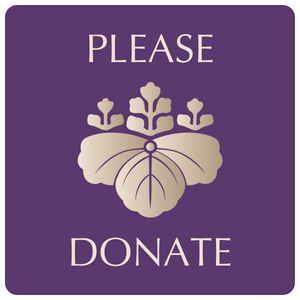Musings on Montague: The Western Socially Engaged Buddhism Symposium — August 2010. By Alan Senauke, originally posted at the Clear View Project.
What is socially engaged Buddhism?
Over the course of the week it was easy to see a number of contrasts or kinds of activities that all can be considered “Engaged Buddhism” or “Socially Engaged Buddhism.” I don’t see a particularly useful distinction between these two rubrics. Engaged Buddhism, Socially Engaged Buddhism — both include a systemic view of suffering and liberation. Elsewhere I have written:
What is socially engaged Buddhism? It is dharma practice that flows from an understanding of the complete and endlessly complicated interdependence of all life. It is the practice of the bodhisattva vow to save all beings. It is to know that our liberation and the liberation of others are inseparable. It is to transform ourselves as we transform all our relationships and our larger society.
Or, as Gary Snyder wrote, nearly fifty years ago in the Journal for the Protection of All Beings #1:
The mercy of the West has been social revolution; the mercy of the East has been individual insight into the basic self/void. We need both.
Social Service
These definitions, of course, demark a wide field of action. (The notion of a Western Socially Engaged Buddhism is something I will address later.) On one end of the field is social service. This might include hospice, tending the ill, feeding the hungry, bringing material and spiritual support to institutions and places in which people are suffering. These places are essentially dukkha warehouses, with their own gravity or magnetism, drawing in and generating further suffering. In his early teachings the Buddha set down Four Requisites for establishing a practice of liberation: food, shelter, clothing, and medicine. Providing these requisites in the spirit of compassionate, selfless action, without the smell of charity and without proselytizing, is Buddhist social service.
Social Activism
On the other end is social activism, social change, and even, as Snyder proposed, social revolution. This is the prophetic dimension of engaged Buddhism. Since Buddhism really has no prophetic tradition, this vision of social transformation is truly a merging of West and East. Yet it has been transmitted from Asian teachers like Thich Nhat Hanh and Sister Chan Khong, Dr. B.R. Ambedkar. A.T. Ariyaratne, Sulak Sivaraksa, His Holiness the Dalai Lama, and many others, known and unknown. Now it is part of our practice: resisting war and militarization, advocating against the death penalty and the delusion of retributive justice, holding the multinational corporations accountable for their destruction of life and the environment. Looking at the Four Requisites, Buddhist activists understand, for example, that the for-profit medical system in America creates illness and death without dignity for vast numbers of people. We understand that affordable housing has ceased to be seen as a goal and a common good by the powerful banks and lending bodies. As Robert Aitken Roshi was always ready to say: the system stinks!
Dharmic Action
But these ends are not in contradiction. They are part of the common field of human action, which includes enlightenment and delusion. Simply feeding a man in need, comforting a woman in her last hours is necessary dharmic action. At the same time, if we can stop or slow down the wheels of war, lives are saved. That is also dharmic action. And social service can be combined with social change. One can simultaneously do hospice work and fight for universal medical care. When teaching in prisons I carefully (and quietly) present my understanding that the American prison system itself is essentially most part unjust, racist, and self-perpetuating.
The teachings of right view tell us to see what is directly in front of us. At times that vision is very close and intimate. In other moments it reaches the most distant horizons. Wherever we look we are seeing into the nature of interdependence itself, seeing that things change.
On the Symposium’s first day I was on a panel considering challenges for Engaged Buddhists. I began by speaking about Aitken Roshi, who had died several days earlier in Hawaii. He was an unstoppable voice calling out for justice, despite the fact that Buddhism speaks much more about what is just — balanced and harmonious — than about justice. Engaged Buddhism may not have taken shape without him. Certainly there would be no Buddhist Peace Fellowship. As for me, I would not be writing these words without Aitken Roshi. I went on to say:
The challenge that faces socially engaged Buddhists in the West is to sustain a radical and internationalist vision. That means finding common action and common practice with the most oppressed and those most hungry for dharma here in the U.S. and around the world. It means, further, understanding just how our privileged lives in the this country depends on and is interwoven with the labors and resources of peoples far away and out of our immediate sight.

